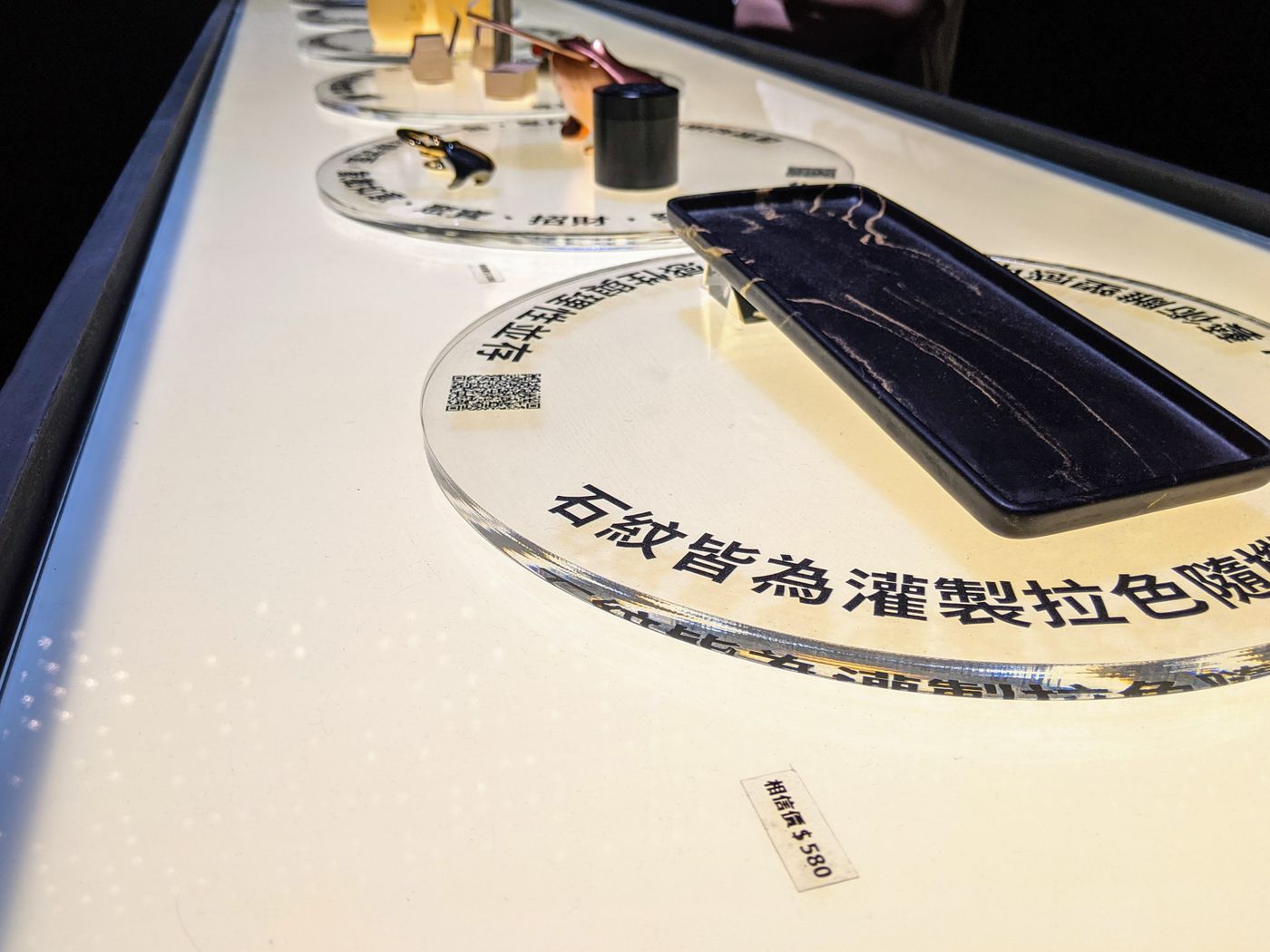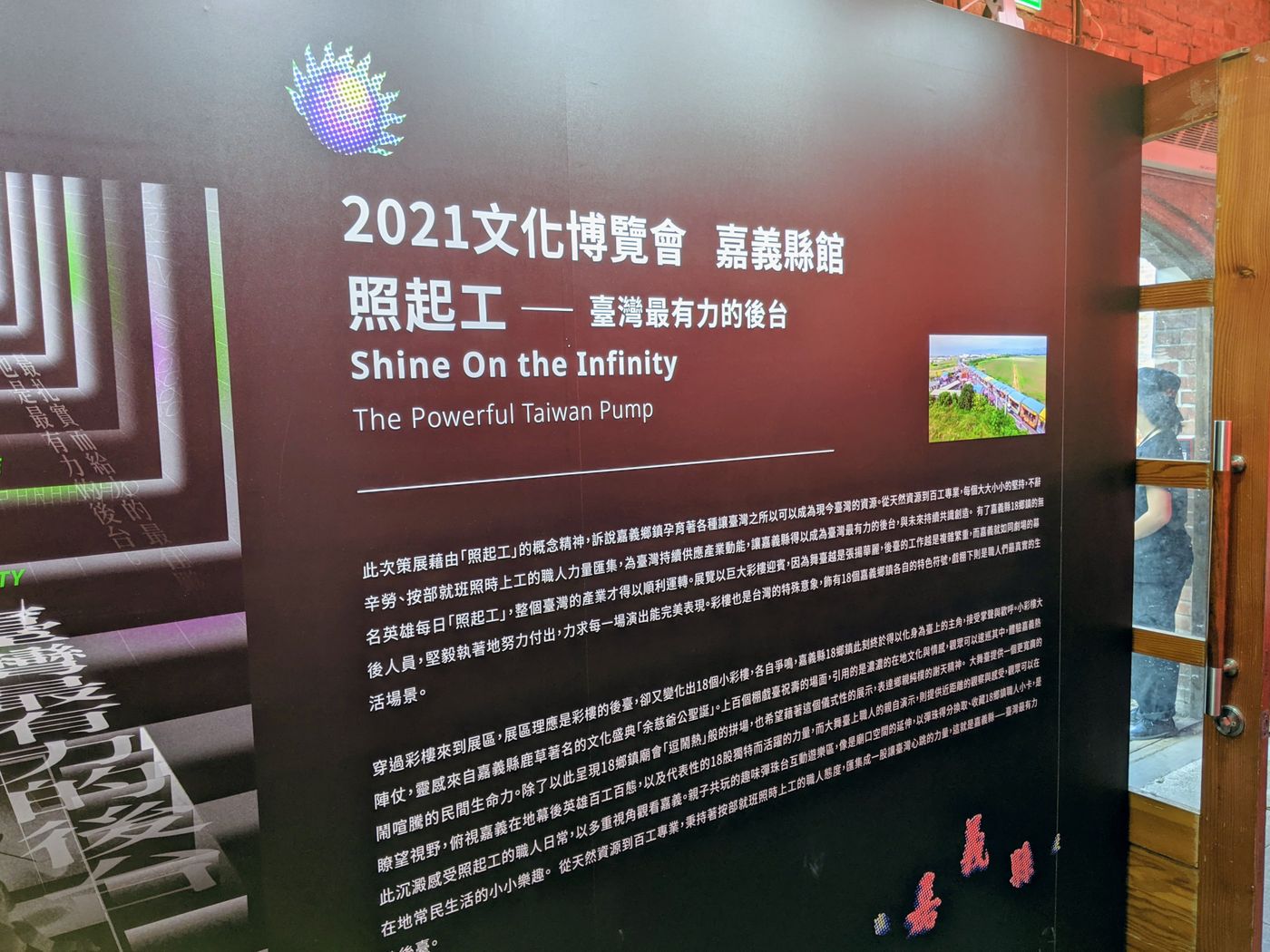Your Chiayi County is not my Chiayi County: Commentary on the 2021 Taiwan Cultural Expo Chiayi County Pavilion
At the end of April this year, I made a special trip to the north to schedule my weekend work. One of the big reasons is because of this year’s Cultural Expo. The concept of local cultural centers pioneered in the previous event has indeed been continued this time. One of them is Chiayi. County; and how the Chiayi County pavilion will be displayed is one of the reasons why I have to participate in this year's CIIF. After all, I grew up in Chiayi County since I was a child. I am looking forward to how this county and city, which has not been in the spotlight for a long time, can be packaged. and debut. Like several friends who were not able to participate, I myself had high expectations for the Chiayi County Pavilion before setting off, but I also bluntly say that the Chiayi County Pavilion made me very disappointed, even while watching the exhibition. I feel uncomfortable at the moment; this may be related to the nature of the art fair itself, but most of it still stems from its curatorial discourse itself.
Before commenting on the Chiayi County Pavilion, we need to talk about the Cultural Expo first. The Taiwan Cultural Expo is sponsored by the Ministry of Culture, with the Taiwan Design Institute (under the jurisdiction of the Ministry of Economic Affairs) as the main organizer and coordinating unit. Taiwan Design Institute, after its transformation and establishment in 2020 from the Taiwan Creative Design Center, its visibility has been rising steadily. The Taiwan Design Exhibition, which I follow closely, is also one of their masterpieces. These two activities are often compared or even confused, but in fact they have different attributes. After all, the essence of the Cultural Expo is an "exposition", a grand event for the display and sale of goods. It can basically be regarded as the annual results announcement of the government after it began to promote the cultural and creative industry (if you want to add context, it can actually be traced back to the Shenzhen Cultural Expo, or is a creative industry in the UK).

Even in the Huashan exhibition area, which is defined as the "Cultural Concept" exhibition area among the three exhibition areas, the theme pavilion "The Law of Belief" that explains this time's theme "Data Temple" and the slogan "Gathering the Power of Belief" is dismantling and reinterpreting "belief". ” concept, and behind the digital lights presented by the light and shadow machinery show that the chief curator Luo Lang Machinery is best at, the last piece of information that guides the audience in this exhibition hall is a table of psychology based on the exhibition process. The "tokens" obtained from the test results are actually a table of products co-branded with this cultural fair. After a brief text introduction, they are finally marked with "I believe the price is XXX yuan" in small characters. When I watched the exhibition, I felt full of questions. Although I was not emotionally aroused by the curator in the exhibition hall, I can understand the curator's intention; but in any case, assuming that I was attracted by the exhibition hall The sound and light effects and narrative in it aroused emotions. At the last moment when I walked out of the exhibition hall, the last message I received was "Believe in the price." "Ah!" I'm not saying that culture should have a clear relationship with capital. After all, the purpose of the CIIF is to display and sell various cultural and creative industries. But I never expected that the curatorial team's shopping guide methods could be clumsy. Like this, and it is still in the theme hall, it is not even as good as the commercial exhibitions of internationally renowned art works organized by major media.

Going back to the Chiayi County Pavilion, the local pavilions have a relatively less commercial atmosphere in the entire expo, especially this year when all the exhibition and sales are concentrated in the "Tropic of Cancer" pavilion. After actually walking around, the more I looked at it, the more I felt a thorn in my back, sticky, itchy, and a sense of distance that was both familiar and unfamiliar. Before departure, I learned that Wang Zhaoqian from the Ruan Opera Troupe was one of the curators, and I looked forward to bringing the vitality and customs of Chiayi County into the exhibition hall through his interpretation. Wang's and I have a high degree of overlap in our social circles. Many of my friends have met him more or less once, or even have close friendships with him. During that time, they all expressed their desire for this show. But I must regret to say that I don’t see Wang’s role in this exhibition. I think that if the local government convenes professional curators and local celebrities to curate the exhibition, it will be able to tell stories that fit the local narrative. However, the Chiayi County pavilion, let’s talk about the conclusion first, is full of various stereotypes, flattening the entire Chiayi County to the extreme, and it does not highlight the characteristics of Chiayi County beyond the literary skills.
The theme of the Chiayi County Pavilion is "Start the Work", which means step-by-step and down-to-earth in Taiwanese. The curatorial team combined it with the two major themes of the venue, "Industrial Workers" and "Sun Palace". Both are concepts extended from the word "work"; the former does not need to be elaborated, while the latter is because the quantifier of date in Taiwanese is "work". I personally think it may also be a response to last year's annular solar eclipse event. At that time, Chiayi County regarded itself as the "City of the Sun", creating a new impression of the local area. These two themes are also presented in different forms in the 18 towns and cities in Chiayi County: the "Industrial Workers" area uses the image of wild stage opera to pay tribute to the deer grass "Grandpa Yu Ci's Christmas" with hundreds of theater stalls lined up The scene of honoring the gods is presented in a video with a famous saying in each township and city. In the "Sun Palace" area, a small night market often found next to the temple fair is reproduced, with pinball booths. To illustrate the method, each town, town, and city in each county has a pinball machine with keywords about local industrial characteristics, tourist attractions, etc.

The "Industrial Workers" area is the starting point of the entire Chiayi County Pavilion. From the beginning of the exhibition, the audience is allowed to enter from the backstage of the theater, in an attempt to conform to Chiayi County's attempt to transform into an "agricultural and industrial county" in recent years, and to shape Chiayi County. It is the image of "Taiwan's most powerful backstage". But what makes me more dissatisfied is the selection of materials and presentation method of Ye Taizhong, which represents 18 towns and cities. The first is the selection of materials. It is obvious that the ones on the stage in most towns are manufacturers participating in this event, rather than the "features" of the place that are generally known to outsiders. Secondly, there are even some towns that are directly placed in the county. Government advertisements, or scenes of Wu Bai’s performance in Liujiao Township; this makes me confused. What is the Chiayi County Pavilion at the Cultural Expo trying to present about Chiayi County? Of course Wu Bai plays a pivotal role in Taiwan's arts and cultural industry, but looking at the entire Liujiao Township, isn't there a culture that is more suitable for people to get to know? Although it is understandable that the CIIF is not a local cultural exhibition after all and does not need to carry out the mission of promoting local culture, the various discussions of the Chiayi County Pavilion cover up Chiayi's name in any place that is regarded as "traditional" and "simple". "Impressions of areas can all be explained. Not to mention, the fixed VCR screen covered by a theater (color building) will also add various noises, which not only interferes with the visual communication, but also reinforces to me the feeling that "locality means backwardness". ” image, which is not only unnecessary, but may also reinforce existing stereotypes.
When I came to the "Palace of the Sun" in the second part, I was really surprised by the name alone. If "Zhao Qi Gong" is a technique that uses Taiwanese Chinese characters to create an unexpected poetic and defamiliarizing language to attract attention, "Taiwan Gonggong" is obviously a decontextualized homophone that dominates contemporary Chinese pop culture. It is very important for understanding the exhibition. The content is not helpful; there is no temple with this name, and in Chiayi County, which is mainly composed of Heluo people and Hokki Han people, no one in the area can understand this pun in the usual language of temples. What's more, it's really hard to imagine how an exhibition area with nothing else but an exhibition area full of pinball machines can be regarded as a "palace"? Not to mention that the official description mentions that " each town's exclusive pinball table uses statistics and popular hashtags on social networking sites to provide an interesting yet in-depth summary of the town. " However, the information comes from the Internet. It is nothing more than local attractions and specialties. Many of the contents are superficial understandings of laymen who have been hyped up. It is really difficult to see the "depth". At the same time, there were several young men in the venue speaking frivolous and deliberately non-standard Chinese, trying to create a style similar to hawking. At the same time, they shouted that they could serve everyone in Taiwanese, but they still didn't say a word. language.
Walking around the entire exhibition hall, I think the biggest problem is the lack of core concepts, or in other words, there is a gap between the core concepts and the actual exhibition presentation; in addition, the curatorial team has no specific imagination of the characteristics of Chiayi County, and can only It is presented with a superficial impression that can be seen everywhere and fails to "start work" as the overall theme says. It is a work that lacks sincerity and preparation. There will naturally be no problem of partiality if presented in the concept of 18 towns, and everyone will get a prize. However, after excluding the place names of these 18 places, it does not seem to be too inconsistent to say that it is Changhua and Yunlin. This is no longer something that can be said humorously by saying, "Your Chiayi County is not my Chiayi County." Instead, we should ask, what is the difference between the Chiayi County that the Chiayi County Museum wants to present and the final effect? How does the gap form?

Of course, there are too many people who can point out the entire exhibition format. The Ministry of Culture, the Design Research Institute, the Jiaxian County Government and other cooperating units all have a certain degree of power to influence the overall curation. It is absolutely impossible to point out these disappointments. It is not intended to place the blame on the two curators. Funding is also something that needs to be considered, and it is by no means something that I can dismiss outright with the benefit of hindsight. I only express some subjective feelings based on my personal one-sided viewing experience.
Like my work? Don't forget to support and clap, let me know that you are with me on the road of creation. Keep this enthusiasm together!



- Author
- More